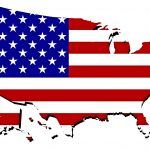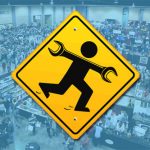The days and even months of trade show preparation leading up to a convention can be very stressful for your team, especially if you are a first timer. Experience is often the only way to know what prep time is required, how else can you prepare for hidden expenses such as electricity or internet access.
Many learn these lessons the hard way through expensive trial and error as their small business grows from a small table top display to a full fledged interactive display booth. Preparation and planning are crucial to help you avoid unexpected costs and hopefully a few grey hairs!
The deciding difference is often having the forethought to create a dashboard of your strategy – give yourself that 10,000 foot aerial view of all the moving pieces (figuratively and literally) that must come together so your team can hit the floor and begin rubbing elbows with your future clientele.
Sure – you could spend the week before your exhibition date barking orders at your marketing team and frantically hoping everything will come together despite the confusion, but let’s do our best to make that your last resort. The ideal strategy is to begin planning at least a couple months in advance to avoid this sort of mad dash. Getting started early allows you have the luxury of being frugal because you have the time to hunt around. You will want to be able to compare pricing on your trade show display, and spend adequate time refining your search for the perfect booth setup.
 Image Source: Monster Displays
Image Source: Monster DisplaysThere are many, many booth configuration options available depending on what size space you’ve purchased. Within that space your display’s style could range from a single retractable banner stand to the popular pop ups and modular types. The possibilities are only limited by your imagination (and budget of course) so identify what added island elements will bring your booth together best, like counter-tops or literature stands. Recommendations like creative use of a podium wrapped graphic for added brand exposure can help you be the one making your booth neighbors jealous.
Begin reading below and see how well your trade show preparation checklist holds up.
1. Trade Show Budget
With all the modular possibilities like interactive flat screen digital signage and countless accessory options, no one can blame you for chasing that bright, shiny object until you’ve built yourself the most awe-inspiring trade show display in the whole exhibition – and indeed succeeded in going way over budget in the process. It is true that careful and savvy budgeting can get you a display that really WOW your attendees, but if you aren’t able to convert enough leads to sales then your company may still be in the red. To avoid this, get started by factoring in all your known convention expenses and forming a budget. This begins to give you an idea of what your marketing department can afford and how much your team needs to accomplish to make up a return on your investment (ROI). In the end, your exhibition display exists to expand your brand awareness and turn interested parties into happy customers.
2. Convention Location
Most industries have a few iconic trade show venues that are held annually. You might want to attend all of them, but many costs such as the price of booth space and fees like electrical usage will always be there, even if you can save money by using an existing display. To avoid burning through your marketing budget without seeing results, identify which venues are going to give you the most value. How do you know if you will make your money back from attending a convention? This is largely an inherent risk, however we again urge you to plan far in advance. By taking the time to identify which of your direct competitors are possibly sponsoring an event and learning as much about which companies from your prospective customer base will be attending a show is going to give you a big boost to reliably gauging ROI expectations.
3. Achievements
By learning the landscape of the trade show venues you want to attend and setting a well-informed budget, you can more accurately set a big goal to achieve. Your goal is going to measure success, so making sure it isn’t pointlessly low or ridiculously high is going to depend on how carefully you examined your budget and exhibition venue. Signing on new customers to make your money back is usually the goal that comes to mind – however the indirect benefits a strong trade show presence often can’t be qualified easily with dollars and cents.
4. Measuring Success
Brand exposure or new product awareness can be a big part of the value of attending a convention and the relationships you form there may not blossom into actual sales until months later. Whatever goals fit your company best, shaping your marketing strategy around these goals is key to your success. Hopefully the months leading up to your exhibition have given you ample time to prepare and set achievable goals. Set realistic milestones you believe your team can accomplish and let your research support your decisions to other departments (especially accounting). When trade show day comes, the professionalism and knowledge base of your team can impact whether you have a good exhibition or a great one – but knowing the difference depends on well informed planning.
5. Brand and Marketing Material
Your branding may just look like pretty colors and a clever logo, but a strong brand identity is one that has been carefully crafted to have a unique, psychological association with your products and company persona. Whether you want to show people you are playful, traditional or the apex of professionalism, it all starts with your branding. It is important to think ahead and collaborate between your sales and marketing department to make projections on how well known your brand will be at the convention and ultimately how to portray yourselves. Much of being the part is looking the part, so when choosing a trade show display you will want to focus your budget on building a presence that reinforces what you want to communicate. Once you have a strong message, backed by attention-grabbing visuals you want to make sure it gets in front of your prospective clients. This is where your takeaways like branded gifts and brochure literature can be a vital tool to reminding someone why they liked meeting with you even months after an event.
 Image Source: Monster Displays
Image Source: Monster Displays6. The Booth Team
While we’re on the subject on perceptions, remember that a great looking trade show display that effectively communicates your brand identity and value proposition to your prospects is only half the task at hand. This is where an unqualified choice of Sales Representatives manning your booth can make or break your entire exhibition. Once your marketing material does its job generating interest in your product and the questions start coming in, it is your booth staff that will be responsible for bringing that sale in. It doesn’t hurt to hold a workshop in your office to refresh your team on frequently asked questions; responses to interested trade show attendees should be well practiced and conversationally driven. Even considerations that should be assumed like professional dress and maintaining a friendly, orderly demeanor shouldn’t be overlooked. Expectations of your booth staff should be discussed, after all these are the people that are representing your company!
7. Capturing Leads
With all the rushing to prepare for your exhibition, it’s easy to lose sight of the core purpose of being there – lead generation. As with all things, have a strategy before and after the event that lets your team hit the ground running. It doesn’t hurt to jot down notes and distinguishing details to remind you of who you spoke while you have downtime in between conversations, it becomes much more difficult to recall these points in the days after. You may find yourself with a big pile of business cards and barely a clue which card matches which conversation. Organizing by alphabet along with short identifiers can help remind you of the who’s-who that you want to follow up with first. This is what all that research, budgeting and review has been building toward, so be ready to begin capitalizing on all those fresh leads you’ve brought back.
8. The Wrap Up
It isn’t always easy or glamorous, but once it is all in the past you should review how well your team did. This means taking the goals you set and taking a hard look at the metrics to see if you came out on top. That includes measuring estimated goals against actual achievement. Were you forced to exceed your initial budget? Did you find yourself unprepared for an aspect of the event? This return on investment analysis should help you determine which convention venues to attend in the future. Carry everything you have learned from your mistakes onto your next show and build upon your successes. Now make sure your team is following up on those new leads!
Experience will prove what techniques for trade show preparation allow your team to capitalize the most. These are just the basics to remember that we have learned from years of trade show attendance and consultation.
If you have any questions on how to find the perfect convention booth for your brand and budget, give us a call at 888-484-3344 or email, we are always happy to help!




